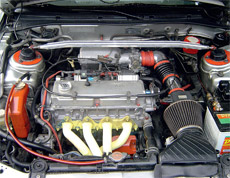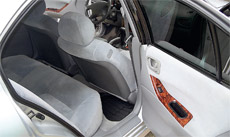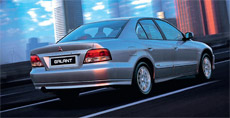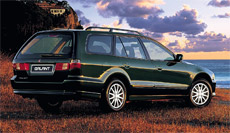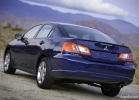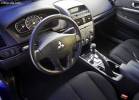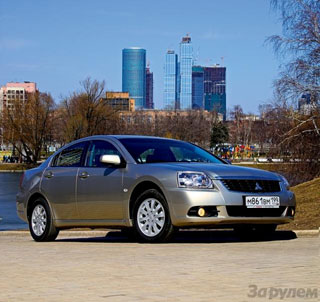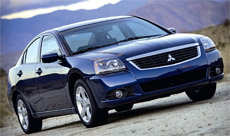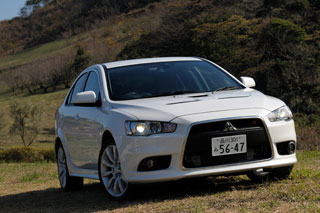Mitsubishi Galant test drive since 2008 sedan
The former line
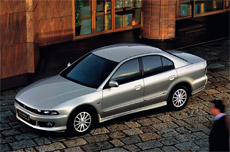 Often, for the sake of changeable tastes of buyers, cars are subjected to radical transformations.
Often, for the sake of changeable tastes of buyers, cars are subjected to radical transformations. Mitsubishi Galant was not always such a fat man. He once loved sport very much and among family machines stood out with tightness and energy. Of course, in the latest generation model, its former sports is visible, but to a much lesser extent than the modification of the seventh generation. That Galant (1996-2003 of the release) was intended for family, but not indifferent to the speed of drivers, moreover with a limited budget. The car was not very expensive, and the content of special trouble did not cause. But more on that below.
And for starters, according to tradition, we carefully consider the machine. Some motorists see the Japanese BMW in this sedan. This is not to say that this statement is completely groundless: narrowed eyes, an aggressive silhouette, a characteristic grille of the radiator, there really is a similarity with the Bavarian soon. No less aggressive and the car in the back of the station wagon: although the barn, but swift. Buyers of used cars will be pleased with the fact that there are practically no complaints about the corrosion resistance of the model. It does not cause any special questions and an electrician.
The salon of a Japanese car does not cause negative emotions among consumers, despite the far from exquisite design and finishing materials by no means a representative class. It is much more important to customers (more than enough space, though the rear sofa width is not enough for the comfortable placement of three passengers) and the convenience of using secondary equipment (this is also a complete order). Thanks to the adjustment of the driver's seat and steering wheel, a person of any complexion will be perfectly arranged in a chair. The only significant reason for the disorder is a limited review of the back. From the habit, you can even make contact with someone else's car.
It is worth it to ride on Galant to agree with the opinion of the Japanese BMW: the behavior on the highway at Mitsubishi is excellent, the vehicles are dashing, and the steering is very responsive. By the way, like Bavarian models, Galant does not complain of a bad road surface: in stressful turns, uneven are the car from the trajectory. The engines are quite decent, and although most of them do not have great power, they carry well for their working volume and declared return. Unless 1.8-liter power units installed on right-handed versions are somewhat sluggish. It should be noted that the modifications developed for the American market are strikingly different from versions intended for the Old World: I can’t even believe that the sharp European Galant and the soft bog, supplied once behind the ocean, is the same model.
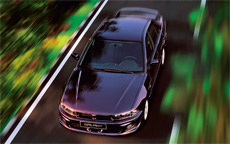 For different countries, the Japanese provided for various engines. So, from Japan, cars with weak 1.8-liter engines, and sometimes VR-4 with 280-horsepower V6 with a volume of 2.5 liters, were often brought to us. Note that the sports version, although frisky, does not like bullying, say, from Mark II Tourer V. With completely reckless driving, it quickly surrenders, in particular, some elements of all -wheel drive transmission do not tolerate frequent slippers. The main stream of cars from the United States walked with a 2.4-liter in-line quad a capacity of 150 horses (a car with a 197-horsepower V6 working volume of 3 liters was considered a top version for the American market). And in Europe, the vast majority of machines are equipped with either a 2-liter power unit developing 136 hp, or a 163-horsepower 2.5-liter V6.
For different countries, the Japanese provided for various engines. So, from Japan, cars with weak 1.8-liter engines, and sometimes VR-4 with 280-horsepower V6 with a volume of 2.5 liters, were often brought to us. Note that the sports version, although frisky, does not like bullying, say, from Mark II Tourer V. With completely reckless driving, it quickly surrenders, in particular, some elements of all -wheel drive transmission do not tolerate frequent slippers. The main stream of cars from the United States walked with a 2.4-liter in-line quad a capacity of 150 horses (a car with a 197-horsepower V6 working volume of 3 liters was considered a top version for the American market). And in Europe, the vast majority of machines are equipped with either a 2-liter power unit developing 136 hp, or a 163-horsepower 2.5-liter V6. How much troubles are delivered by engines installed once on Galant? By no means. Say, V6 with a high mileage is characterized by a knock of camshafts. However, the ailment, as a rule, does not progress, in other words, you can ride this way. In addition, the engines equipped with a direct injection system of GDI fuel are extremely sensitive to gasoline quality, so you should refuel only at proven gas stations. Otherwise, only planned maintenance is required, especially Japanese cars love timely prevention. It is necessary to change the oil every 15 thousand km, an air filter every 30 thousand km, fuel in 60 thousand. The timing belt will last all 90 thousand km. On this, in principle, the recommendations for caring for the engine are exhausted.
The gearboxes installed on Galant are not presented with special surprises. But only when the driver remembers that this machine for racing is not intended: for models equipped with an automatic box, sharp starts with two pedals are fraught with premature death of the hydrotransformer. Alas, this is not a box of Aisin, which was once distinguished by a huge margin of strength. But in Mitsubishi, the checkpoint has the possibility of a sequential choice of transmission in manual mode, not to mention the adaptive logic of work. And there are no complaints about reliability if you do not start regularly from a traffic light with a box. In case of gentle operation, the box will only require oil replacement every 90 thousand km.
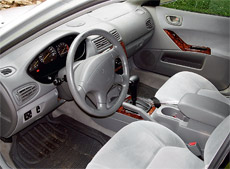 Unfortunately, for competent handling, combined with the pleasant smoothness of the Galant, you have to sacrifice the suspension details: the elements of the chassis are far from the most durable. For example, the front lower levers rarely withstand the mileage over 30-40 thousand km, and the service life of steering rods rarely exceeds 60 thousand km. It is believed that machines made for America are equipped with a more durable suspension than analogues constructed for the European market. But, as already noted, they are controlled much more calmly.
Unfortunately, for competent handling, combined with the pleasant smoothness of the Galant, you have to sacrifice the suspension details: the elements of the chassis are far from the most durable. For example, the front lower levers rarely withstand the mileage over 30-40 thousand km, and the service life of steering rods rarely exceeds 60 thousand km. It is believed that machines made for America are equipped with a more durable suspension than analogues constructed for the European market. But, as already noted, they are controlled much more calmly. Any driver sees in his dreams a car that connects, it would seem, mutually exclusive properties. And many of these features are successfully combined in Galant: practicality combined with sports, radiating power and swift appearance, four (and more) doors often in one bottle? The more offensive is that the model of the current generation did not become the development of the previous topic. Now all family machines are striving to be like Toyota Camry, and even if the Mazda 6, who became the ideological heir to the seventh generation, went along this path (as, by the way, Honda Accord), you should not scold mitsubishi marketerers. Why go against consumer preferences, which cause such significant transformations in the positioning of models? It remains only to rejoice that the year 2003 (it was then that the production of the eighth Galant ended) is not so far that there is no way to find a living copy of this car.
Approximate prices in Moscow: from 200 (Galant VR-G with a 1.8 liter of 1997 engine) up to 450 thousand rubles. (Galant V6 2003 release).
The advantages and disadvantages of the model
Advantages
Excellent behavior on the road, recognizable appearance, high reliability
Flaws
harsh suspension (Europe), rather weak suspension, a large age of the model
